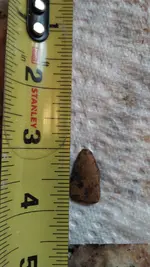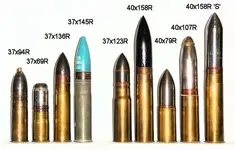Kype
Full Member
- Joined
- Mar 4, 2019
- Messages
- 187
- Reaction score
- 380
- Golden Thread
- 0
- Location
- New Jersey
- Detector(s) used
- Tesoro tejon/Garret AT pro
- Primary Interest:
- Metal Detecting
was burried about 8 inches deep. the top and bottom is rusted however theres a middle piece on it that is not rusted. bottom is flat. top is pointed. heres some photos with measurements. sounds hollow inside. any ideas before i start to clean it up?


disregaurd the last photo. cant seem to delete it from post.
disregaurd the last photo. cant seem to delete it from post.





